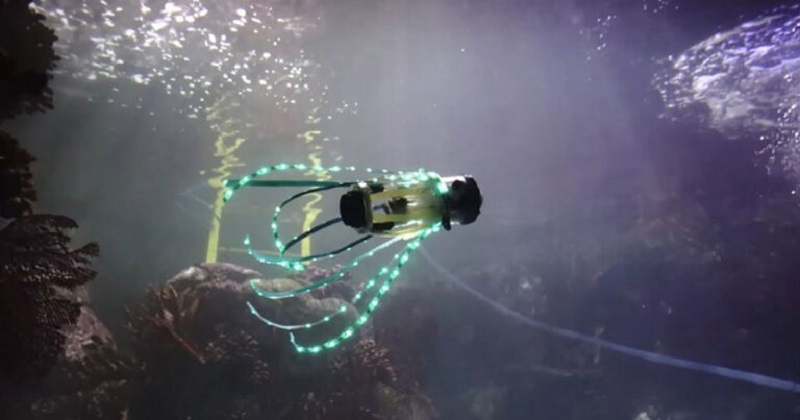
To explore underwater environment without damaging coral or sea life, engineers created a robot squid. Soft robots are less likely to harm aquatic life than rigid ones. Researchers used mainly soft materials like acrylic polymer to build the device, along with a few 3D printed and laser-cut rigid parts.

The team drew inspiration from the jet propulsion mechanism of real squid to help the robot swim by itself. It takes some water into its flexible body, where it also stores elastic energy. The robot can compress its body to release that energy and use a water jet to propel itself. The device can adjust the nozzle’s position, so it can swim in any direction.
“Essentially, we recreated all the key features that squids use for high-speed swimming,” said Michael T. Tolley, a professor at the university’s department of mechanical and aerospace engineering, and a senior author on a paper about the robot. “This is the first untethered robot that can generate jet pulses for rapid locomotion like the squid and can achieve these jet pulses by changing its body shape, which improves swimming efficiency.”

Post Your Comments